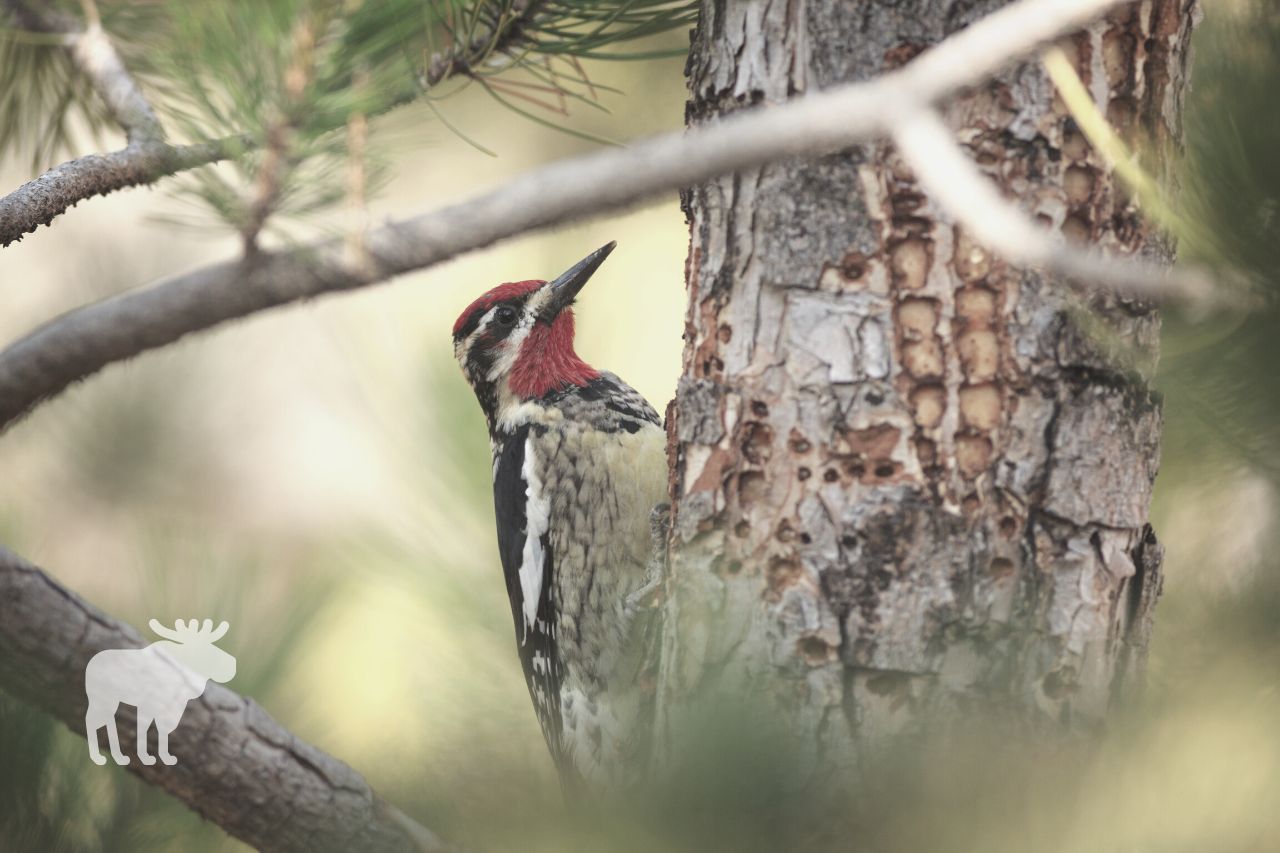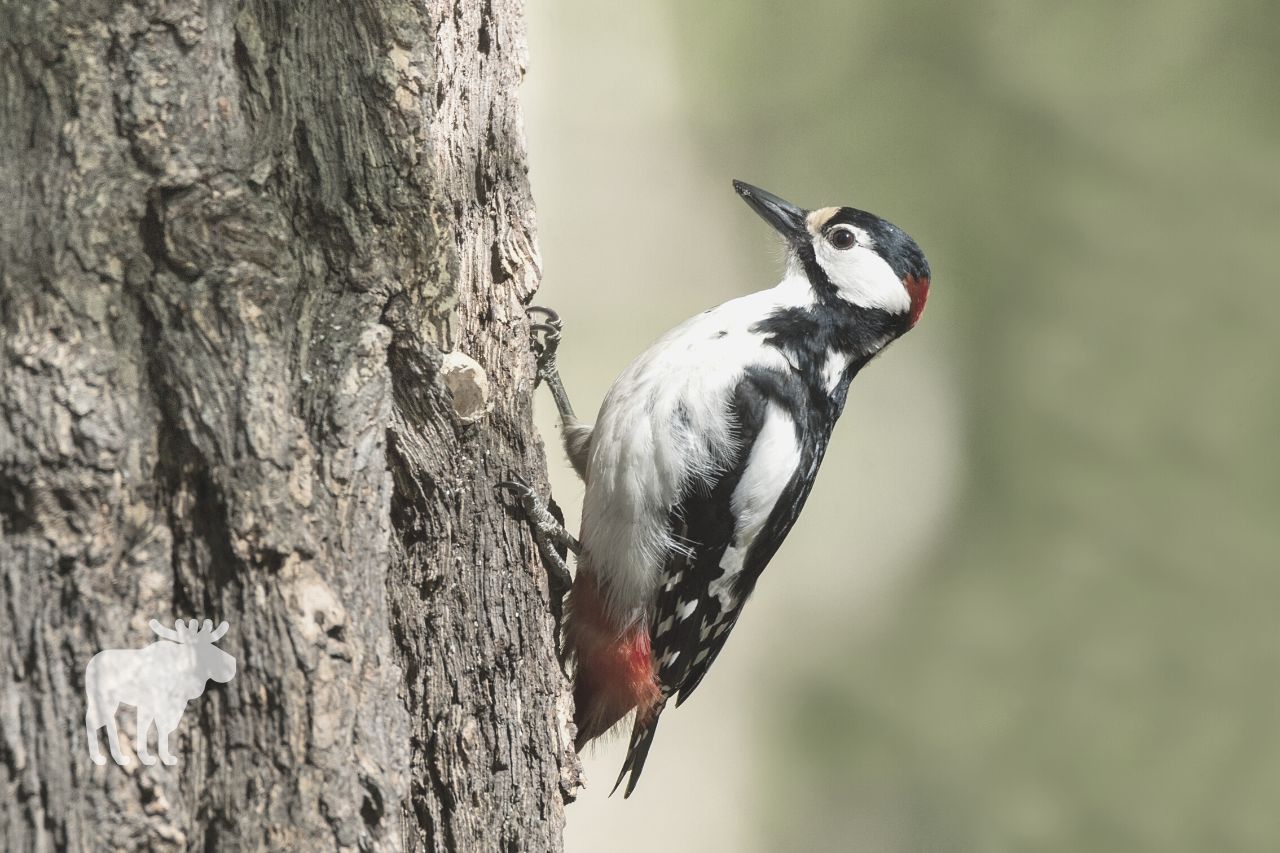Knock-knock-knock; you hear a familiar sound coming from the trees in your yard. You may automatically think you’re hearing a woodpecker, but did you know there are other birds that also hammer on trees? In this article, we’ll compare the sapsucker vs. the woodpecker, discussing each type of bird in detail, their similarities and differences, and how to tell which one has taken up residence in your trees.
What You'll Learn Today
What is a Sapsucker?

A sapsucker is a type of bird found throughout much of North America, particularly the United States and Canada. There are four species of sapsucker; the most common and widespread is the yellow-bellied sapsucker, a migratory bird found mostly throughout the eastern half of North America.
Sapsuckers are considered tree pests; they can weaken trees, allow disease and decay to overtake them, and even kill them over time. They do this by hammering holes in the tree trunks to get to the sap inside.
Sapsuckers eat tree sap, as their name suggests (their favorite trees being maple, birch, elm and some oaks). They are known for creating horizontal rows of holes in tree trunks in an effort to release more sap.
They may enlarge these holes over time, and they often add additional holes to the initial rows they create. Girdling, or creating rows of holes that completely encircle the trunk, can cause serious damage to trees.
Sapsuckers commonly target birch and maple trees, both of which produce a significant amount of sweet-tasting sap. They also like other trees as well, including spruce, hemlock, and some fruit trees.
Sapsuckers tend to be about the size of a robin, perhaps slightly larger. They have long, pointed beaks, feet made for gripping the sides of tree trunks, and long tongues.
Sapsuckers have various colors and patterns depending on their species, but they commonly have brown, black, white, and yellowish feathers with red markings on the head.
Check out this video to learn more about the yellow-bellied sapsucker:
What is a Woodpecker?
Woodpeckers are birds that often look similar to sapsuckers. There are well over 200 species of woodpecker in 36 genera that can be found throughout the world.
Woodpeckers are known for hammering on trees, light poles, and the sides of houses and barns, searching for wood-boring insects to eat. When pecking on trees, they usually choose dead or decaying trees because those are most often where insect infestations are found.
Woodpeckers tend to create a few large, randomly-placed holes in trees and wooden objects as they search for insects. After hammering a hole in the wood, they will insert their long tongue to search the hole for insects and will quickly move on if they don’t find any.
Because they tend to target trees that are already dead or dying, woodpeckers aren’t considered tree pests–they don’t cause significant damage and do not kill healthy trees. They will peck holes in any species of tree, but they show a definite preference for dead trees over live trees.
Woodpeckers come in various sizes depending on their species; some are quite small, while others grow nearly as large as a crow. They commonly have red markings on their heads and brown, black, white, and gray feathers on the rest of their bodies.
Check out this video to learn more about woodpeckers:
Sapsucker Vs. Woodpecker: Similarities and Differences
As you can probably tell from the above sections, woodpeckers and sapsuckers are fairly similar to each other; of course, they also have some notable differences.
Let’s take a closer look at those similarities and differences below.
Similarities
- Both are birds: Sapsuckers and woodpeckers are both types of birds; though they don’t belong to the same bird families, they share many traits and characteristics.
- Both peck trees: One of the most common traits these birds share is their tendency to hammer on tree trunks. They do this both while searching for food and to mark their territories.
- General appearance: Sapsuckers and woodpeckers are very similar in appearance; they both have red, white, brown, and black feathers, long beaks, and similar-looking feet and tails. Because of their similar looks and behaviors, people often mistake them for being the same type of bird.
Differences
- Scientific families: Sapsuckers and woodpeckers may look quite similar, but they are in different classes of birds. Sapsuckers belong to the family Sphyrapicus, while woodpeckers belong to the family Picidae.
- Hole size and shape: Though they both peck on trees, sapsuckers and woodpeckers produce dissimilar-looking holes. Sapsuckers produce distinctive horizontal rows of small holes, while woodpeckers produce fewer, larger, and more random holes.
- Tree preferences: Sapsuckers target live trees, and they seem to prefer maple, birch, hemlock, spruce, and assorted fruit trees. Woodpeckers prefer dead or dying trees of any species.
- Effect on trees: Sapsuckers drill many holes in live trees, making them larger and larger and drinking a lot of the sap; this can weaken and even kill healthy trees over time, as well as allowing diseases and insects in through the holes. Since woodpeckers target trees that are already dying, they are not considered harmful to the trees; that said, they can cause some damage to houses, barns, and other wooden buildings and objects.
Sapsucker Vs. Woodpecker: How to Tell the Difference

You’ve been hearing a knocking sound on trees in your yard; maybe you’ve even caught passing glances of the birds responsible for creating the noise. Now you’re wondering how to tell whether they are woodpeckers or sapsuckers.
- Know your trees: If you know what types of trees you have in your yard, you may be able to guess which type of bird you’re dealing with. If you have live, healthy maple, birch, or certain other trees, you’re probably hearing sapsuckers; on the other hand, if you have dead, diseased, or decaying trees on your property, you are probably hearing woodpeckers.
- Look at the holes: Checking out the holes in your tree trunk is one of the best ways to identify whether you have sapsuckers or woodpeckers. If the holes are fairly small and you find a lot of them in horizontal rows, you have sapsuckers. If the holes are large and sporadic over the surface of the tree trunk, you more likely have woodpeckers.
- Consider the bird’s size: Size isn’t always the best indicator, since some woodpeckers are larger and some are smaller than sapsuckers. However, if you know which species of bird live in your area, you may be able to tell whether the bird is a woodpecker or a sapsucker based on its size, as well as species-specific markings and coloring.
Conclusion
Sapsuckers and woodpeckers are two types of birds that hammer holes in tree trunks, but they do it for different purposes. Sapsuckers target live trees and eat the sap that runs out of the holes they make; woodpeckers usually hammer on dead or decaying trees in search of wood-boring insects and to mark their territory.
Hi Nicky!
Thanks for your article. We discovered through some research that Sapsuckers actually belong to the same family as Woodpeckers – the Picidae family. Hope this helps!